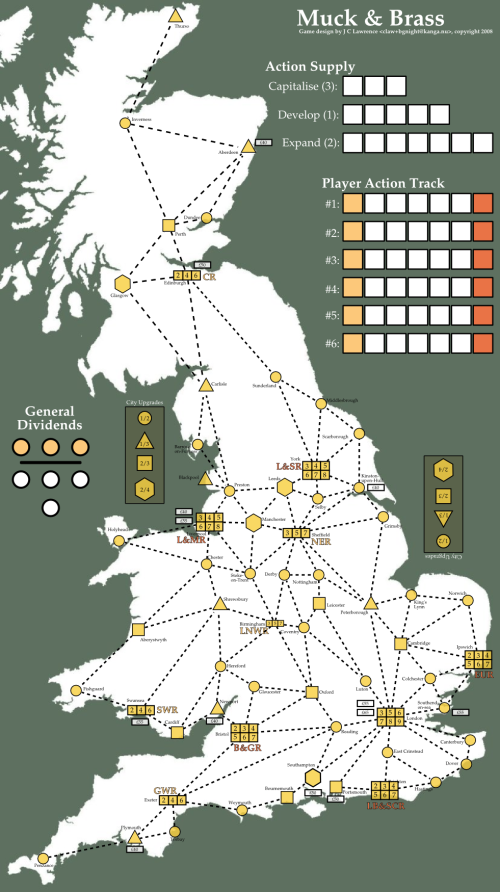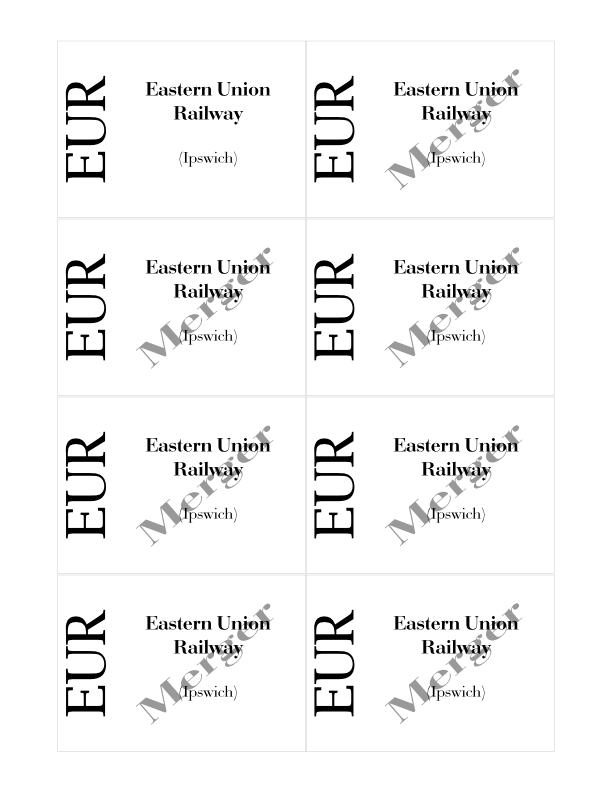Understanding Duck Dealer
I’ve played Jeroen Doumen and Joris Wiersinga’s Duck Dealer twice. It is a tough game to grok.
Update: In fact the game is sufficiently difficult to grok that almost all the below is flat out wrong. It is hogwash. Beware. I’ll be writing up a correct summary of the game after it reaches broad release.
- Duck Dealer is a perfect and certain information logistics game very much in the spirit of Roads & Boats and Neuland but with its own unique take
- Don’t be deceived by the light and funny theme
- Duck Dealer is a deceptively direct re-interpretation of Merchant of Venus
- The theme, core nouns and board-patterns are similar
- The play decisions and game character are violently different
- Duck Dealer is a mentally demanding forward-looking planning-festival. Merchant of Venus is a much lighter and simpler affair of delivery optimisation with occasional opportunities
- Three players is probably the sweet spot, maybe four with experienced players
- The first phase of the game is ship improvements
- The opportunity cost of ship improvement is usually prohibitive later in the game
- Each pattern of ship investments establishes a natural rhythm for that ship; the rhythm at which it takes energy and then acts
- The balance of colours on the ship likewise establishes a natural activity-type rhythm
- None of the choices of combinations for game-start ship configuration are obviously bad but each one strongly suggests a different ship development tack and thus resulting rhythm
- I suspect that the game’s initial turn order plus the ship configurations of the player’s ahead of you in turn order is a key factor to smart initial ship configuration decisions
- I also suspect this reflects strongly into suggested ship configurations
- It is clear that the random distribution of initial mines and the consumer tile ordering affects this and in fact defines these choices
- It is not at all clear to what extent this is true in practice given human’s struggle with the decision space of the game
- Coarsely (there are exceptions) the larger/more equipped a ship is the longer its rhythm
- The heart of the game is managing your ship’s natural logistical rhythms against the emergent opportunity costs as the game/board develops and new buildings (tiles) are placed
- It is viable to stay with an undeveloped 8-speed ship with two discs and a cargo hold
- The undeveloped ship strategy is the most programmatic (fewest significant decisions), most risky and most subject to interference from other players
- Undeveloped ships are dependent on rapid short-term opportunity exploitation which in turn requires frequent actions and results in a short/fast game
- If the undeveloped ship dawdles the better equipped ships will out-pace them
- If multiple players do run undeveloped ships they will drive a short/fast game that will likely seem to be decided arbitrarily
- I find longer games with more developed ships more interesting
- The more ship improvements the players do, the longer the game will be and the more of the board will be developed
- Just one undeveloped ship moving fast and staying focussed can drive a fast/short game
- The value of Build/yellow decreases during the game, sometimes precipitously.
- Build/yellow can be worth a lot early in the game
- Exception: Heavily built ships with two movement can reliably profit from Build/yellow energy to place Galactic Infrastructure (cubes on routes) to help manage their naturally short (2) movement distance
- The bigger your ship is the more often Galactic Infrastructure (cubes on routes) is more useful than privilege markers on tiles
- Teleports are remarkably hard to place usefully
- Clever teleport placement may invert some of these observations
- I have yet to see a clever teleport placement
- With rare exception there are more VPs for building factories and flipping consumer tiles than doing milk runs stuffing goods into an already flipped consumer
- Establishing and then running a production loop is almost invariably less profitable than focussing on building factories and flipping consumer tiles
- This is directly opposite from Merchant of Venus’ reward patterns
- Exception: Ships with huge hold-spaces (7+ capacity?) can profit enormously from a well-optimised production loop (ie privileges claimed on all steps) on a 25/10 consumer.
- The usual reason players act is that they become unable to sustain comprehension of their intended move. Their mental stack overflows, they lose track and so they act instead of continuing to search for the optimal risk/value return for energy accumulation. This is often (almost always) a mistake.
- Usually getting more energy and doing more later is markedly more efficiently profitable
- Unless someone gets there first
- The game is all about acceleration curves against game length
- Each player’s ship investment has a pay-off curve
- A undeveloped ship is faster to build, runs more quickly but makes fewer points per natural action
- A big ship takes longer to build and runs more slowly but makes more points per natural action
- The players emergently determine the game length
- Which player’s ship’s reward-curve/opportunity-exploitation-rate/game-length sums best when the game ends is the core question of the game




